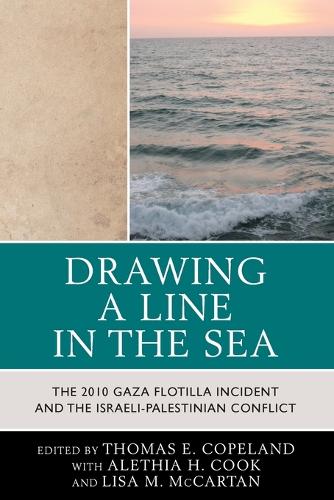
Drawing a Line in the Sea: The Gaza Flotilla Incident and the Israeli-Palestinian Conflict
(Paperback)
Publishing Details
Drawing a Line in the Sea: The Gaza Flotilla Incident and the Israeli-Palestinian Conflict
By (Author) Thomas E. Copeland
With Alethia H. Cook
With Lisa M. McCartan
Contributions by Deane-Peter Baker
Contributions by Thomas E. Copeland
Contributions by Jeanette Fregulia
Contributions by Christos Frentzos
Contributions by Susan Jellissen
Contributions by Lisa M. McCartan
Contributions by Spencer Meredith
Bloomsbury Publishing PLC
Lexington Books
18th October 2013
United States
Classifications
Professional and Scholarly
Non Fiction
Human rights, civil rights
Terrorism, armed struggle
327.5694
Physical Properties
Paperback
200
Width 154mm, Height 231mm, Spine 15mm
322g
Description
The deadly May 31, 2010 Gaza flotilla incident has been misunderstood. This book explores the incident in more detail than mainstream media coverage has allowedexplaining the background, key players, and the incident itselfenriched by the authors having had unique access to senior Israeli officials in the immediate aftermath of the event. The incident is a microcosm of the struggle between terrorism and democratic societies, and raises a number of legal, ethical, and strategic political issues in the contemporary Middle East. Chapters address the political and military scenario preceding the incident, key state and non-state actors involved, military and ethical dimensions of the operation, and the aftermath in the media and politics. The book provides thoughtful and readable analysis that is useful to policy makers and to the general public, and draws some important conclusions for the continuing conflict between democratic states and terrorists and their sponsors.
Reviews
The Gaza Flotilla Incident of 2010 marked a dramatic shift in Turkey's relations with Israel and with the Middle East region in general. Drawing a Line in the Sea, an excellent collection of 14 essays by academics familiar with the region, goes a long way toward helping readers understand what led up to the Gaza Flotilla Incident and its significance to the Middle East and beyond. Drawing a Line is effectively organized in three parts: The Scenario, The Players, and The Incident and its Aftermath. Each has its own story to tell and each essay is well worth the read. -- Fred M. Gottheil, University of Illinois at Urbana-Champaign
Author Bio
Thomas E. Copeland is associate professor of political science and humanities at Geneva College.
Alethia H. Cook is assistant director of the Security Studies Program at East Carolina University.
Lisa M. McCartan is associate professor in the department of anthropology, criminology, and sociology at Le Moyne College.
